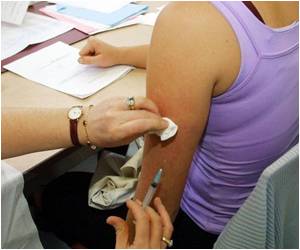An innovative hybrid surveillance strategy helped Virginia mount an efficient and effective response to the ongoing outbreak of fungal meningitis and other infections.

'Hybrid' Surveillance Response to Contaminated Steroid Crisis The VDH implemented the hybrid strategy in response to the 2012 outbreak of meningitis and other fungal infections, which was traced to contaminated steroid products supplied by a Massachusetts compounding pharmacy. Virginia was one of the hardest-hit states, with 53 affected patients—including two deaths—over a six-month period. Two Virginia healthcare facilities—both free standing pain/interventional radiology clinics in the southwest region of the state—received the contaminated products.
Because of the subtle symptoms, potentially long incubation period, and the risk of serious illness and death, Virginia public health officials decided that intensive, active surveillance was needed to contact and track nearly 700 exposed residents. The VDH rapidly developed a "hybrid" active surveillance strategy, reflecting a combination of traditional active surveillance performed by public health personnel, and additional surveillance and clinical follow-up performed by health care providers and hospitals.
In the hybrid surveillance model, public health personnel took the lead in contacting potentially exposed patients who may have received spinal injections with the contaminated steroids. Telephone follow-up included weekly calls to assess for new signs and symptoms of possible infection, and to refer patients to clinical care if indicated.
'Excellent Partnership' between Public Health and Clinical Partners Once patients had received testing and care from clinical partners, responsibility for further tracking and follow-up was passed on to the treating physicians. If the patient was diagnosed with a fungal infection, the doctor reported the suspected case back to the VDH. The VDH maintained close contact with partner hospitals to keep up with evolving clinical information.
"It was a division of labor of sorts, as the volume of patients requiring close follow up was just so large," Dr. Forlano explains. "In most cases, if a patient with symptoms sought medical attention—whether from an emergency room, primary care doctor, infectious disease specialist, or elsewhere—that exposed person became the responsibility of the clinical team."
From the start of October through the end of November, 2012, the VDH documented nearly 3,100 patient contacts. The initial surveillance program was stopped after eight weeks, based on evidence suggesting that any infections caused by the contaminated steroids would have developed within that time.
Dr. Forlano and coauthors also believe their hybrid model could be usefully applied to future large-scale health threats, whether natural or man-made. They conclude, "It should be used as a basis for planning the response to events requiring time-sensitive, active follow-up of a large number of exposed individuals that could be required after an intentional or unintentional community wide exposure to a biologic, radiologic or chemical agent."
Source-Eurekalert
 MEDINDIA
MEDINDIA




 Email
Email






